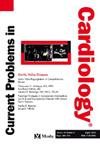非酒精性脂肪肝、2型糖尿病和心血管疾病的三位一体关系:从分子机制到临床管理
IF 3.3
3区 医学
Q2 CARDIAC & CARDIOVASCULAR SYSTEMS
引用次数: 0
摘要
非酒精性脂肪性肝病(NAFLD)和2型糖尿病(T2DM)是具有多方面病因的相互关联的代谢性疾病,与心血管疾病(cvd)表现出双向关系和明显的相关性。尽管进行了广泛的研究,但关于这些合并症的时间进展,高危人群的最佳筛查策略以及同时针对肝-心-代谢轴的个性化治疗方法,仍然存在重大的知识空白。目前的文献缺乏对NAFLD-T2DM-CVD集群表型异质性的全面分析,未能充分解决疾病进展模式的性别特异性和种族差异。系统地检索了PubMed、Medline、Embase、Web of Science和谷歌Scholar数据库,检索时间从成立到2024年6月,检索了包括NAFLD、NASH、T2DM和cvd在内的各种术语组合,重点是确定机制途径、流行病学趋势和治疗创新。本综述确定了与肝脂肪变性、胰岛素抵抗和心血管功能障碍相关的新的病理生理机制,包括以前未被充分探索的肠道微生物群失调、晚期糖基化终产物和表观遗传修饰的作用。新出现的证据表明,不同的分子特征可以促进精准医疗方法。糖尿病、肝功能障碍和心血管并发症之间错综复杂的相互作用是一项全球健康挑战,需要综合管理策略。未来的研究应优先开发生物标志物引导的治疗算法,调查性别特异性治疗反应,并建立NAFLD-T2DM-CVD并发管理的标准化方案,以优化临床结果并减轻医疗负担。本文章由计算机程序翻译,如有差异,请以英文原文为准。
The triadic relationship between nonalcoholic fatty liver disease, type 2 diabetes, and cardiovascular disease: From molecular mechanisms to clinical management
Nonalcoholic fatty liver disease (NAFLD) and type 2 diabetes mellitus (T2DM) represent interconnected metabolic disorders with multifaceted etiology, demonstrating bidirectional relationships and pronounced associations with cardiovascular diseases (CVDs). Despite extensive research, significant knowledge gaps persist regarding the temporal progression of these comorbidities, optimal screening strategies for high-risk populations, and personalized therapeutic approaches targeting the hepatic-cardiac-metabolic axis simultaneously. Current literature lacks a comprehensive analysis of phenotypic heterogeneity within NAFLD-T2DM-CVD clusters and fails to address sex-specific and ethnic variations in disease progression patterns adequately. A systematic literature search was conducted across PubMed, Medline, Embase, Web of Science, and Google Scholar databases from inception to June 2024, employing various combinations of terms including NAFLD, NASH, T2DM, and CVDs, with emphasis on identifying mechanistic pathways, epidemiological trends, and therapeutic innovations. This review identifies novel pathophysiological mechanisms linking hepatic steatosis, insulin resistance, and cardiovascular dysfunction, including previously underexplored roles of gut microbiome dysbiosis, advanced glycation end products, and epigenetic modifications. Emerging evidence suggests distinct molecular signatures that could facilitate precision medicine approaches. The intricate interplay between diabetes, hepatic dysfunction, and cardiovascular complications represents a global health challenge requiring integrated management strategies. Future research should prioritize developing biomarker-guided therapeutic algorithms, investigating sex-specific treatment responses, and establishing standardized protocols for concurrent NAFLD-T2DM-CVD management to optimize clinical outcomes and reduce healthcare burden.
求助全文
通过发布文献求助,成功后即可免费获取论文全文。
去求助
来源期刊

Current Problems in Cardiology
医学-心血管系统
CiteScore
4.80
自引率
2.40%
发文量
392
审稿时长
6 days
期刊介绍:
Under the editorial leadership of noted cardiologist Dr. Hector O. Ventura, Current Problems in Cardiology provides focused, comprehensive coverage of important clinical topics in cardiology. Each monthly issues, addresses a selected clinical problem or condition, including pathophysiology, invasive and noninvasive diagnosis, drug therapy, surgical management, and rehabilitation; or explores the clinical applications of a diagnostic modality or a particular category of drugs. Critical commentary from the distinguished editorial board accompanies each monograph, providing readers with additional insights. An extensive bibliography in each issue saves hours of library research.
 求助内容:
求助内容: 应助结果提醒方式:
应助结果提醒方式:


